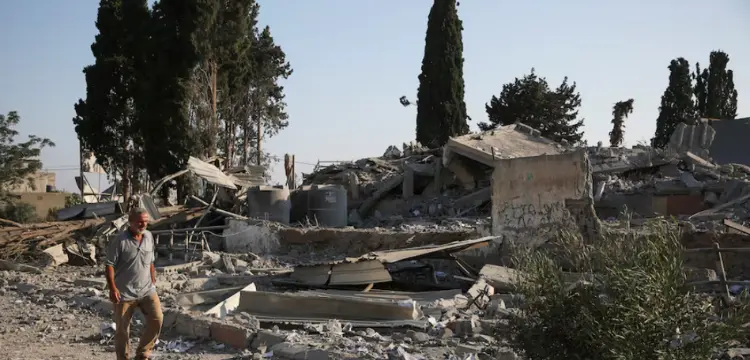A child died of malnutrition in northern Gaza overnight, and six people were killed, with several wounded, in renewed Israeli bombings of residential areas in Gaza City, Palestinian health officials reported on Thursday. In Rafah, a southern city where Israel is nearing the completion of a month-long operation against Hamas fighters, residents said the military had flattened several districts over recent days. More than eight months into Israel’s war on Gaza, triggered by a Hamas-led cross-border attack on October 7, aid officials warn that the enclave remains at high risk of famine, with nearly half a million people facing “catastrophic” food insecurity.
Mohammad Jamal, a 25-year-old resident of Gaza City, described the dire situation, saying, “We are being starved in Gaza City and are being hunted by tanks and planes with no hope that this war is ever ending.” The death of another child at Kamal Adwan Hospital on Wednesday night raised the number of children who have died from malnutrition and dehydration to at least 31, according to health officials. They noted that the ongoing war has made it difficult to record such cases accurately.
Israel denies creating famine conditions, blaming aid agencies for distribution issues and accusing Hamas of diverting aid, allegations that Hamas denies. Palestinian health officials reported that three people were killed when Israeli planes bombed five residential buildings in Gaza City’s Sabra neighborhood. Rescue teams are searching for others trapped under the rubble, while three more people were killed in the nearby Shejaia neighborhood. Resident Jamal remarked, “It sounded as if the war is restarting, with a series of bombings that destroyed several houses in our area and shook the buildings.”
Also Read: ARMY4Palestine: BTS Fans Rally for Gaza Amid Israeli Conflict
Drone footage shared on social media, which Reuters could not immediately verify, showed dozens of houses destroyed in parts of Rafah, with the Swedeya village completely wiped out. There was no immediate comment from the Israeli military on the overnight action.
Meanwhile, the U.S. and Israel are discussing post-war plans for Gaza. Despite intense Western pressure for more aid to Gaza, international mediation backed by the U.S. has yet to secure a ceasefire agreement. Israeli Defense Minister Yoav Gallant, during a visit to Washington, discussed proposals for the governance of post-war Gaza, which would involve local Palestinians, regional partners, and the U.S. He acknowledged that this would be “a long and complex process.”
Senior U.S. officials informed Gallant that the U.S. would continue to pause a shipment of heavy munitions to Israel while the matter is under review. This pause began in early May due to concerns that the weapons could cause further Palestinian casualties in Gaza. Hamas insists that any deal must end the war and result in Israel’s full withdrawal from Gaza, while Israel has stated it will only accept temporary pauses in fighting until Hamas, which has ruled Gaza since 2007, is eradicated.
Hamas-led militants stormed southern Israel on October 7, killing around 1,200 people and taking over 250 hostages, according to Israeli reports. The Israeli offensive in response has killed 37,658 people, the Gaza health ministry reported on Tuesday, leaving Gaza in ruins. While the Gaza health ministry does not distinguish between combatants and non-combatants, officials claim that most casualties have been civilians. Israel has lost 314 soldiers in Gaza and claims that at least a third of the Palestinian dead are fighters.
Gaza’s population of 2.3 million is suffering from severe food shortages, lack of clean water, and poor sanitation, which is spreading disease. An Israeli security official and a Western official told Reuters on Wednesday that Israel plans to increase electricity to a desalination plant to produce more water for Gaza. The Western official noted that while this would help alleviate the water crisis, solving it fully would require extensive repairs.











